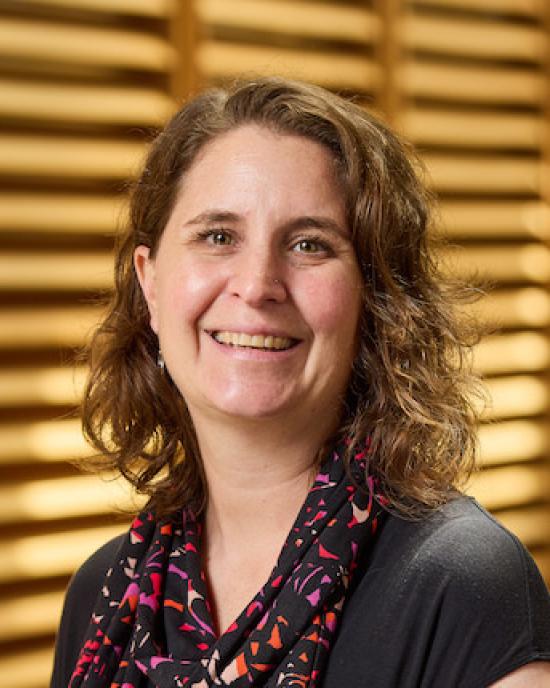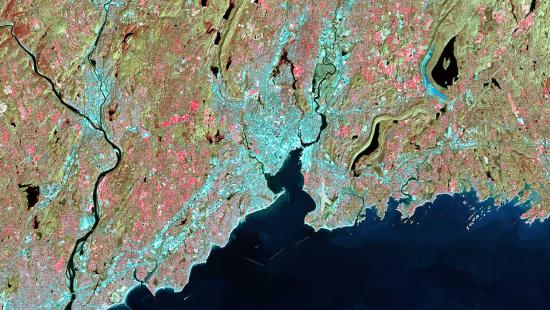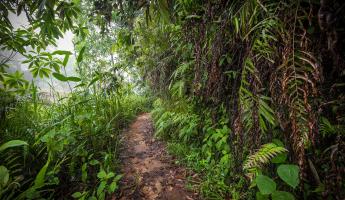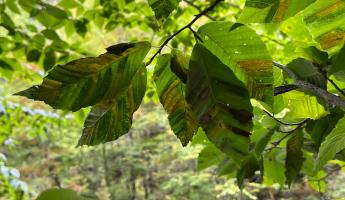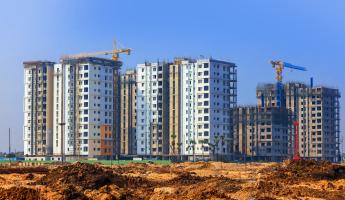There haven’t been many long-term studies on urban forests, but data collected from the Thain Family Forest, which the New York Botanical Garden (NYBG) has been stewarding for more than a century, has provided an opportunity for scientists from The Forest School at YSE to study a century of changes of its composition.
Using inventory data from 1937-2021, Eliot Nagele ’21 MF, who initiated the research while a forester at Thain and a student at YSE, documented changes in forest structure, diversity, and composition to assess the health of the forest over time. The study, published in the Journal of Forestry, was conducted in partnership with NYBG, which offers a joint degree with YSE. It was co-authored by YSE’s Marlyse Duguid, Thomas J. Siccama Senior Lecturer in Field Ecology; Mark Ashton, Morris K. Jesup Professor of Silviculture; and PhD student Thomas Harris. NYBG’s Todd Forrest ’98 MFS, Erica DeLuca, and Maria Martello were also co-authors. It was the second published study in a project examining the unique data.
“Long-term monitoring of forests are rare and old growth forests in the east are rare to begin with. On this site we have vegetation tracking forest structure and composition back over 80 years, so we have a much deeper picture of forest dynamics,” Duguid said.
Urban forests are critical to the health of cities and provide a bevy of benefits, such as carbon sequestration and local temperature moderation. They also provide wildlife habitat and offer recreational and educational opportunities.
The researchers found that Thain forest experienced significant change in species composition. Following the loss of eastern hemlock from an invasive insect, the forest increased its proportion and diversity of hardwood species such as oaks, hickories, red maple, black cherry and American beech. Yet, native species remained dominant. Despite the changes, forest canopy remained stable with efforts to remove understory plants.
“Old forests have changed significantly. Late successional forests don’t stay the same compositionally. They change composition from one late successional species to another. It’s a reflection of the dynamics of these woodlands in relation to time and in relation to human-caused introductions of insects, disease, invasive plants, and storms that can likely be attributed to changes in climate. So far, the forest has responded as a community because one species has usurped the growing space of another,” Ashton said.
With continued conservation and management, urban and rural forests may develop in similar patterns, encouraging regional approaches to forest management, the authors noted.
Newsletter
Biweekly, we highlight three news and research stories about the work we’re doing at Yale School of the Environment.
“In this study we show that with continued conservation, active management, and the absence of deer, a mature forest imbedded within an urban metropolis can sustain vital ecosystem services; mirror patterns of change occurring in forests region-wide; and support the regeneration of a diversity of native plant species,” Nagle said. “These results highlight the value of adaptive management and support continued investments in the conservation, management, and monitoring of urban forests regionwide.”
Forrest, who is vice president for horticulture and living collections at NYBG, said the 50-acre Thain forest, which was once part of a forest that covered all of New York City, has much to teach us about resilience and the promise of nature in cities.
“It is our hope that this research will help us become better stewards of the forest and inspire others to take a closer look at the pockets of nature that persist in their cities,” he said.

